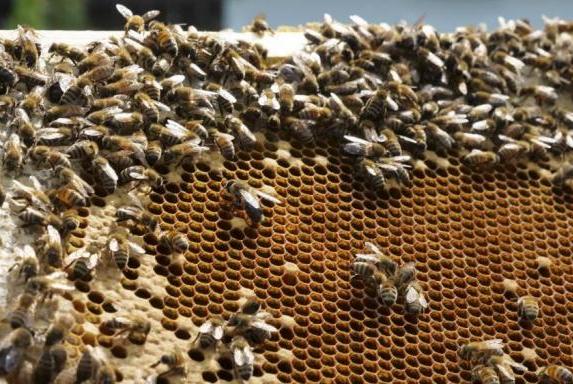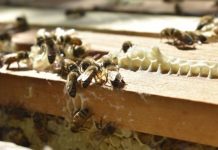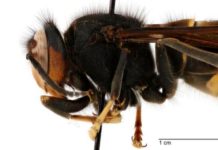
Aug. 4 (UPI) — To keep bee hives cool, honey bees fan their wings to promote circulation. New research suggests the behavior is socially influenced.
Previous research showed groups of bees are more likely to fan their wings. The newest study revealed the individual interactions that promote group behavior.
Observations showed older, more experienced worker bees encourage younger nurse bees to fan their wings. Scientists found older bees had the greatest influence on younger bees when they were the first to fan in a group.
“The older workers are definitely influencing the younger nurse bees,” researcher Rachael Kaspar said in a news release. “I was interested in how different age groups socially interacted, what are the variances between age groups and how are they interacting to have a proper homeostatic response to environmental stressors.”
Kaspar is now a professional research assistant in the department of anesthesiology at the University of Colorado’s Anschutz Medical Campus. She studied bee fanning behavior while an undergraduate at the University of Colorado, Boulder.
If temperatures inside a beehive rise above 96.8 degrees Fahrenheit, bee larvae can die. The hive’s longterm health depends on fanning behavior.
The research — published this week in the journal Animal Behaviour — offered a reminder that behind group behaviors are myriad individual interactions. These interactions add up to produce a variety of social phenomena.
To understand these interactions, scientists had to keep track of who was who inside the hive. Water soluble paints helped researchers track individual bees.
Scientists claim the dynamic is similar to those that inspire fanning behavior among some of Earth’s most intelligent species — elephants, chimpanzees and humans.
“You would think that bees as insects wouldn’t have the capability to learn, remember or have these social influences,” Kaspar said. “But, in fact, they do. Bees are a great model to use for studying other societies, like us.”




